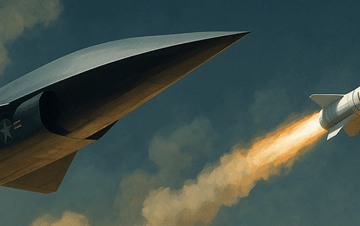With Donald Trump’s return to the White House, Arab states already face a pivotal moment in shaping their foreign policy. Known for his transactional diplomacy and “America First” approach, Trump is likely to prioritize issues that directly benefit the US economy and enhance its strategic power, particularly vis-a-vis China and Russia.
For Arab states, the current situation in the Middle East, US, and regional Arab partners presents an opportunity to work on realigning strategic interests and unify stances on critical files, including but not limited to the conflict in Gaza and Lebanon, the rising tensions in Syria, Iran’s regional agenda, the war in Sudan, and the increasing instability in Africa. This is all made worse by Russia’s growing influence across the continent, including but not limited to Libya and West Africa.
There are three main pathways Middle Eastern governments should pursue in navigating the complex dynamics of Trump’s second term. These approaches can further enhance US-Arab cooperation.
First, they should strengthen regional security cooperation with the US. The Trump administration adopted a more “hands-off” approach during his first term, encouraging regional players to take greater responsibility for security issues. While this may seem advantageous, as it motivates America’s regional Arab partners to fortify their security frameworks, bolster the development of their defense capabilities, forge regional alliances, and cultivate rapid-response capabilities to manage intricate and intensifying threats, the region has never experienced such a high concentration of security risks and geopolitical tensions.
Accordingly, Trump’s return to the White House could significantly alter American engagement in Middle Eastern conflicts on a diplomatic as well as a military front. While Arab and American defense and security cooperation, particularly with Gulf Cooperation Council (GCC) nations, steadily improved over the past several decades, escalating regional tensions necessitate closer security cooperation.
Furthermore, Arab states face multifaceted threats from non-state actors and cross-border insurgencies. The Houthis in Yemen, for instance, continue to pose a serious risk through their use of drones, missiles, and other asymmetric tactics. Given the Trump administration’s prior backing of Saudi operations against the Iranian-backed Houthis, Arab states should use this time to rally support for a collective defense strategy.
This should involve the creation of a coalition to monitor Houthi activities in Yemen and across the Gulf, establish missile defense systems, and coordinate intelligence-sharing to counter both Houthi and Iranian influence in the region, which is likely to increase if not countered proactively. Regardless of the geopolitical context of the Houthis’ missile attacks on Israel, the firing capabilities they possess presents an existing threat to regional Arab states, especially those states perceived by Iran as American allies.
The situation with the Houthis in Yemen is even more complex than it seems. While it seems that Iran is the main influencer over the Houthis’ actions, concerns are growing over the possible support the Houthis are receiving from Russia. There is also a belief that Iran is facilitating negotiations with Russia to supply advanced missiles to the Houthis. If confirmed, this strategy already proved successful for Russia in West Africa. There, Russia succeeded in supplanting the West’s influence in the region. It appears that Russia is likely pursuing a similar strategy through the Houthis to expand its influence in the region surrounding the Red Sea.
The Red Sea remains strategically vital, not only for Arab states along its coast but for global energy markets and trade. With American forces taking the lead in trying to mitigate the Houthi threat to international maritime security, Egypt, Saudi Arabia, and the United Arab Emirates (UAE) will need to take a leading role in jointly securing these waters. Undoubtedly, the Red Sea requires enhanced security coordination. A joint Arab-Western naval task force could assist in patrolling shipping routes, countering smuggling and piracy, and monitoring hostile activities from Yemen. Establishing a formalized security alliance with a mandate to promptly respond to Red Sea threats would also empower Arab states to protect this vital trade route from disruptions caused by the escalating regional tensions.
Second, the Arab states should establish clear strategies for key regional conflicts. Trump already demonstrated a strong pro-Israel stance and a preference for rapid conflict resolution in areas like Syria and Yemen. Middle Eastern states should prepare for a Trump-led push toward “finishing” ongoing conflicts quickly. By articulating clear positions on key conflicts, Arab states can ensure their voices are considered in any accelerated diplomatic initiatives or negotiations aimed at de-escalating the rising tensions in the Middle East.
Iran’s influence in the Middle East remains a unifying concern for most of the Arab states, especially those in the Gulf. Trump previously adopted a “maximum pressure” policy against Iran, along with stricter sanctions and renewed efforts to isolate Tehran diplomatically. To capitalize on this stance, Arab states might consider forming a Gulf-led coalition that directly addresses Iran’s regional activities, particularly in Iraq, Lebanon, and Syria.
Iran is also trying to influence the conflict in Sudan and other parts of Africa via different means, including the supply of drones. Enhanced joint counterterrorism programs, intelligence sharing, and military exercises with Arab, African, and Western states would ultimately improve their collective capacity to deter Iran’s influence and destabilizing operations.
Iran’s nuclear program remains a daunting issue. Iran continues to progress its nuclear capability and may one day decide to break out of current restraints.
The Israeli-Palestinian conflict, especially the Gaza situation, remains a flashpoint with the potential to escalate regional instability given the growing humanitarian crisis in Gaza. Trump is likely to adopt a pro-Israel stance, perhaps further supporting Israel’s objectives in Gaza and across the West Bank, which could lead to intensified confrontations.
Arab states, especially those participating in the Abraham Accords, are likely to strike a delicate balance. Arab states will mostly maintain new alliances with Israel to counter Iran and its proxies in the Middle East while simultaneously supporting Palestinian civilian and humanitarian rights. Establishing diplomatic channels and regional communication frameworks dedicated to de-escalating potential violence in Gaza and supporting humanitarian efforts could prevent larger-scale disruptions.
Third, engage proactively with the US on trade and economic reforms. Trump’s “America First” policy often includes economic demands, which could translate into renewed expectations for favorable trade agreements or investments. Arab states should be ready to highlight their contributions to American economic interests, particularly in energy, infrastructure, and tech investments, including artificial intelligence and the acquisition of advanced defense and security platforms. By advancing reforms that make their markets more attractive to American investors, Arab nations can enhance their economic relationship with the US and position themselves as valuable trade partners, thus securing a foothold in Trump’s strategic calculus.
However, Trump’s likely shift to a more confrontational stance toward China could offer both challenges and opportunities. Middle Eastern states, particularly those heavily involved in China’s Belt and Road Initiative and oil exports, should prepare for potential pressures from Washington to limit Chinese economic influence. To balance these dynamics, Arab states could focus on diversifying alliances beyond the US-China dichotomy, enhancing relations with countries in Asia, Africa, and Europe.
That said, the ambitious India-Middle East-Europe corridor (IMEC) project announced during the 2023 G20 summit still holds great potential for regional integration and trade. Furthermore, the project which mainly involved India, Israel, Jordan, the Kingdom of Saudi Arabia (KSA), and the UAE has the full support of the US. In this respect, despite the challenges facing IMEC, it still presents an opportunity for all the involved nations to strategically engage with Trump on an economic front.
Understanding the internal divides within the US will be crucial for Arab states as they navigate the Trump administration. Trump’s “America First” base and his support among conservative Americans may reshape US foreign policy in ways that do not align with traditional Arab interests. By strengthening ties not only with Trump but also with Congress, local leaders, and both major US political parties, Arab states can foster a more balanced approach and create broader support for their long-term interests within American policy circles.
Trump’s return to the White House brings new opportunities and challenges for Arab states, particularly during a period of reshaping the region’s geopolitical power. By proactively engaging with the US, strengthening alliances, and enhancing their regional security frameworks, Arab nations can adapt to the changing American foreign policy landscape. In doing so, they will be better positioned to secure their interests and foster regional stability amid Trump’s renewed presidency.
About the Author

Mohamed ELDoh
Dr. Mohamed ELDoh is a business development and consulting professional in the defense and security sector. Mohamed holds a doctorate degree from Grenoble École de Management - France, an MBA from the EU Business School-Spain, and an Advanced Certificate in Counterterrorism Studies from the University of St. Andrews, UK. He regularly authors articles addressing defense cooperation, counterterrorism, geopolitics, and emerging security threats in the Middle East and Africa.




